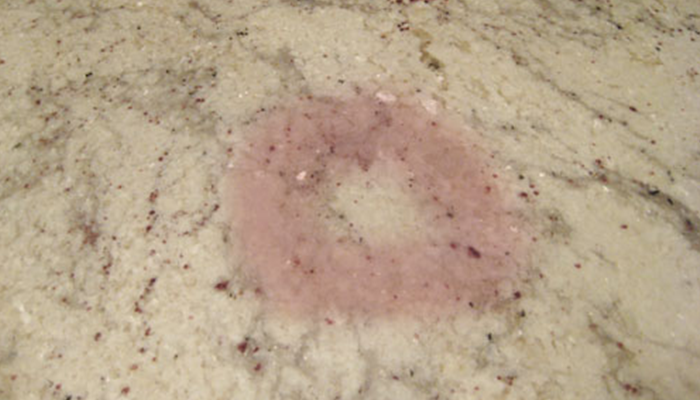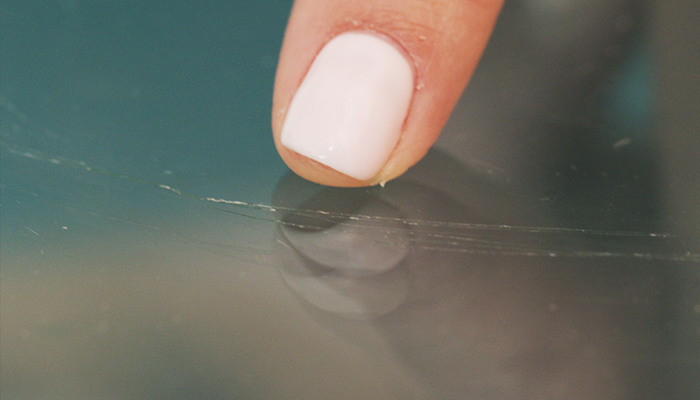The One-Stop Guide to Materials for Table Tops
A table is likely one of the most frequently used furniture in your house – whether for preparing or having your meals, getting some work done, or just a convenient surface to hold the trinkets of daily life. That is why it pays to get the right material to balance design and durability. This article summarises the pros and cons of commonly-used materials for table tops.
Marble
When it comes to modern luxe interiors, one of the most popular materials is marble. The classic Caraca white and Marquina black marble undoubtedly exude a cool elegance that complements the contemporary, slightly aloof vibe that some would like to achieve.
However, the maintenance efforts for marble are significant; marble is a porous material that absorbs liquids – especially acidic ones – very easily. Hence, it has a tendency to accumulate stains, and coasters are necessary all the time. A thick topcoat is typically required to seal the material, which could need frequent refinishing. Lastly, marble is cold to the touch, which in our humble opinion, affects the way you interact with it.

Quartz
Unlike natural marble, quartz is a man-made material that overcomes some of the flaws of marble. It is less porous (stains less easily), and requires less maintenance.
However, as the material is man-made, it is unable to replicate the natural beauty of marble – it often has an artificial “plasticky” feel.

Glass
Glass tables were very popular in the 90s in modern interiors, but it has since been overtaken by more organic elements. Most people want their homes to be as different from their cold office spaces as possible. Being relatively inexpensive and scratch-resistant, many homeowners also customise a piece of glass to protect their wooden table tops, to be changed out every few years or so. This is considered an aesthetic faux pass to many designers as it obscures the natural beauty of the wood. Glass also has a tendency to chip, and could even shatter if exposed to uneven heating.

Laminates
Laminates are essentially thin sheets of plastic that cover a base material (which can be fibreboard, plywood etc). Besides the risk of chipping (laminates are brittle), this material is low-cost, durable and low-maintenance. For that reason, it is used for high traffic areas such as fast-food restaurants and coffee shops. However, this material could perhaps be the least aesthetically-pleasing – most people certainly would not want their homes to look like a KFC!

Veneered Table Tops
Like laminates, veneers use a thin layer to cover a base material. The key difference is that a veneer is made of natural wood while laminates are artificial. This allows the veneer furniture to achieve a natural look without incurring the full material costs. While it might look similar to solid wood furniture, a trained eye can quickly tell the difference from the repeating wood grain patterns, giving away the artificiality of the “wooden” material. Veneers are also less durable than solid wood as delamination (peeling off), chipping and denting are more likely. Veneered furniture also likely cannot be refinished, unless thicker veneers are used.

Solid Wood
Our material of choice is solid wood as it marries aesthetics with practicality. To us, nothing beats the natural beauty of wood; there is just something in mother nature’s artistry that resonates deeply with the human soul. It exudes a feeling of warmth, making it perfect for home use. Solid wood tables are also durable and easy to maintain if properly finished. Modern finishes have further enhanced the ease of maintenance of wooden furniture.
Summary
Natural
| Solid Wood | Veneer | Marble | |
|---|---|---|---|
| Aesthetics | Unbeatable natural beauty | Falls short of solid wood to trained eye | Good for modern luxe interior but could be too cold for some |
| Durability | High durability if (1) hardwood is used and (2) wood is finished properly | Dents and chips more easily than solid wood | Typical marble lacquers scratch easily. Marble could chip |
| Maintenance | Modern finishes offer unprecedented ease of maintaining wood furniture | Same as solid wood but likely cannot be refinished | High maintenance |
Man-Made
| Quartz | Glass | Laminate | |
|---|---|---|---|
| Aesthetics | Looks more artificial than marble | Dated | Looks cheap |
| Durability | High durability | Glass is scratch resistant but brittle | High durability besides potential to chip |
| Maintenance | Easy to maintain except for some issues with staining | Easy to maintain | Easy to maintain |
